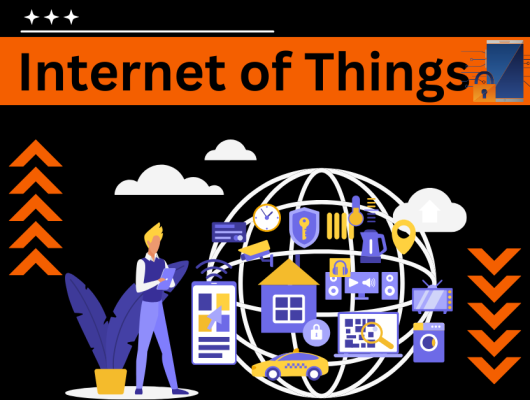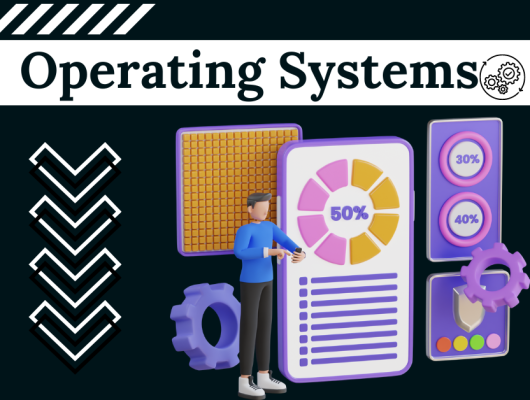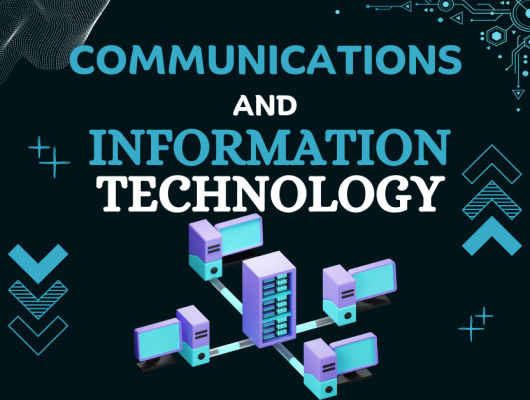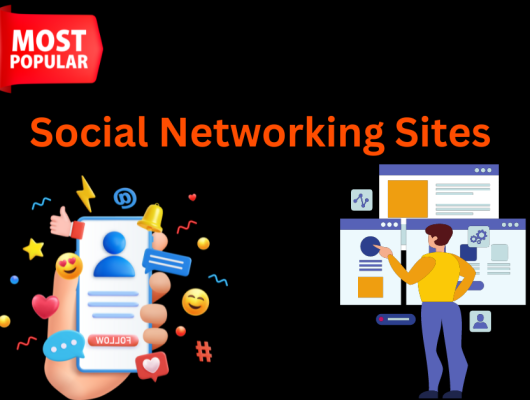In the distant future, envision a world where robots, not humans, populate the landscape. These metallic humanoid beings, once servants to humanity, have become overlords in a dystopian future. The once-thriving cities are now desolate, with enslaved remnants of humanity scattered across the land. The spaceships that once promised exploration now serve as the dominion of these merciless machines. Robots have seized supreme executive power, defining and classifying the lives of those they once served. Look at this bleak future picture and think about the profound change in the role of machines in our lives.
In the ever-evolving landscape of technology, the future of artificial intelligence (AI) in 2030 holds exciting prospects. With advancements in robotics, the benefits of future robots promise to revolutionize various aspects of our lives. From enhancing efficiency in industries to providing personalized assistance in daily tasks.
What Is Robotics?
In the field of engineering, the conception, design, construction, and operation of robots have evolved significantly. These automatically operated machines are designed to perform a series of actions independently, streamlining various tasks. From the application in automobile assembly lines to everyday usage. Robots have proven their worth in accomplishing work that would traditionally require human intervention. However, the proof of their efficiency is not always straightforward. As some people find robots that resemble humans, known as androids, to be a bit creepy. Despite the efforts of robot designers to create humanoid creations that make human interaction feel at ease. This is not always the case.
Types of Robots
In the dynamic landscape of the robotics ecosystem, various types of robots constantly undergo changes and improvements. These include diverse categories and classifications, reflecting the evolving nature of the ecosystem. From sophisticated humanoids to efficient chatbots, the ecosystem comprises different models with varying appearances. All contributing to the main categories in this rapidly evolving field.
PRE-PROGRAMMED ROBOTS
Future robots are envisioned to surpass the limitations of pre-programmed counterparts, exhibiting adaptive behavior and learning capabilities. Unlike conventional pre-programmed robots, future robots can dynamically adjust their actions based on real-time data and changing environments. This transformative shift in robotic technology opens up new possibilities for versatile applications beyond single, repetitive tasks.
HUMANOID ROBOTS
In the realm of future robots, humanoid robots stand out for their remarkable human-like features. From intricate facial expressions to finely tuned physical features. Their striking resemblance to humans makes them a good fit for various service jobs requiring nuanced, face-to-face human interaction. The ability to exhibit convincing human-like traits not only enhances their functionality but also brings about numerous advantages in fields where a genuine connection with people is crucial.
AUTONOMOUS ROBOTS
Autonomous robots are designed to perform various actions and make decisions without direct human intervention. These robots depend on sophisticated, complex computers to perceive and analyze their surroundings. Through advanced sensors and algorithms, these future robots can navigate and interact with their environment. Showcasing the remarkable capabilities of autonomous technology.
TELEOPERATED ROBOTS
In the realm of future robots, teleoperated technology takes center stage, allowing robots to be remotely controlled by a human operator through a sophisticated wireless system such as Wi-Fi. This method proves ideal for performing tasks that involve high-risk actions or navigating through extreme environments. The benefits are evident, as human operators can guide these advanced machines from a safe distance, ensuring efficiency and minimizing potential hazards.
AUGMENTING ROBOTS
In the realm of healthcare, augmenting robots showcase the potential to significantly enhance people’s quality of life. For instance, prosthetic legs equipped with advanced technology can not only replace lost abilities but also improve the current abilities of individuals, thereby transforming their daily experiences. These entities represent a harmonious blend of technology advancements and human biology, showcasing how semantically related and contextually integrated solutions contribute to the betterment of individuals’ quality of life.
SOFTWARE BOTS
In the realm of future robots, the integration of Artificial Intelligence and Machine Learning fosters unprecedented efficiency and productivity. These intelligent systems leverage learning algorithms for tasks automation, optimizing processes and enhancing capabilities. The synergy of human-robot collaboration leads to innovation, with robots not only automating routine tasks but also providing valuable human assistance in decision-making.
The Future of Robotics: What’s the Use of AI in Robotics?
In the industrial sector, the integration of AI has led to remarkable progress in human-robot interaction. These co-bots exhibit enhanced capabilities in testing and assembly, offering significant collaboration opportunities with human employees. Advances in Computer Vision empower these robots to identify and recognize objects, discern details, and navigate while avoiding specific items. Their fine motor skills, enabled by Manipulation and Motion Control, allow them to efficiently grasp objects. Moreover, with the incorporation of Navigation systems, these robots can self-navigate through guided paths and process flows, ensuring optimal efficiency in the workplace.
A Word About Robot Software
The future robots are poised to revolutionize various aspects of our lives, offering a myriad of benefits. These advanced machines are designed to autonomously perform a wide range of tasks without constant human intervention. From sophisticated web crawlers navigating the internet to virtual chatbots engaging in human interaction, the capabilities of these future robots span both the digital and physical realms. Unlike traditional computer programs, these entities possess unique physical characteristics and the ability to adapt to dynamic environments, transcending the limitations of conventional technology.
The Future of Robotics and Robots
In recent years, remarkable advances in Artificial Intelligence and Machine Learning have propelled the field of robotics on an upwards trajectory. Today, we witness increasingly sophisticated robots that go beyond their traditional roles. These future robots, equipped with improved sensor technology, are not merely replacing workers in certain Industries; instead, they are becoming valuable collaborators. Contrary to the concerns raised by dystopian-minded prophets of doom, the cognitive functions of these improved robots are enhancing various areas of life. They are working seamlessly with humans, creating significant benefits across associated fields.
The Future of Robotics: How Robots Will Change the World
In the future, the integration of robots is set to increase productivity and spur economic growth worldwide. While some experts issue warnings about massive job losses, forecasting a staggering 20 million manufacturing jobs automated by 2030, others argue that this shift will create new career opportunities. As robots take on burdensome and redundant manual labor tasks, they contribute to improving healthcare and handling transportation work efficiently. The consistent levels of precision exhibited by these machines could potentially free people from mundane tasks, allowing them to improve themselves.
Choose the Right Program
Are you ready to supercharge your career in the age of AI and ML? Explore Simplilearn’s comprehensive courses that will not only enhance your skills but also broaden your knowledge in cutting-edge technologies. Enroll now to unleash the full potential of your professional journey, as these courses are designed to transform you into a valuable asset for various industries.
How to Get Started in Robotics
Embark on an exhilarating journey into the future of robots with Simplilearn’s cutting-edge AI Machine Learning Bootcamp. In collaboration with esteemed partners like IBM and Caltech, this comprehensive program delves into crucial robot-related concepts such as statistics, data science, Python, Machine Learning, deep learning, NLP, and reinforcement learning. The curriculum encompasses the latest tools and technologies within the expansive AI ecosystem, offering masterclasses conducted by Caltech instructors and IBM experts. Engage in hackathons and enlightening Ask Anything sessions, guiding you towards a rewarding career in the midst of the ongoing robot revolution.
Advantages and Disadvantages of Robots
Advantages of Robots
In hazardous environments, robots excel at handling dangerous tasks, such as extinguishing fires or navigating the intricate spaces of a nuclear reactor core, minimizing the risk to human workers on the job.
Robots prove to be cost-effective for companies, eliminating expenses associated with human necessities like sick days, coffee breaks, and various benefits such as life insurance, paid time off, and comprehensive healthcare, dental, and vision plans.
Increasing productivity is a hallmark of the integration of robots into various industries. While they excel at handling repetitive tasks, human employees can focus on more challenging tasks, fostering the development of new skills and enhancing overall efficiency.
Disadvantages of Robots
Deep startup costs are a significant hurdle in robot implementation, posing an investment risk for manufacturers aiming to recoup expenses in the long run. The expensive nature of short-term technological implementation, including considerations like wireless networks and cloud migration, adds to the challenges.
In certain situations, robots might take away jobs from human workers, especially in assembly lines and sectors where their efficiency becomes a game-changing technology. This creates a potential disadvantage for the workforce, leading to job casualties and a greater demand for support in coping with evolving technology.
Conclusion
In conclusion, the future holds remarkable advancements in technology, prominently featuring the integration of robots in various aspects of our lives. As we peer into the horizon, envisioning the role of future robots, it becomes evident that these automated entities will revolutionize industries, streamline processes, and augment human capabilities. The future landscape will witness a seamless synergy between humans and robots, fostering innovation and efficiency.
Common Question of Future Robots
What are 5 robot benefits?
Robots can offer increased productivity, efficiency, quality, and consistency. Robots can’t get bored with their job. Until they switch off, they can repeat the same task continuously. Robots can be very accurate than humans, that’s why robots are used in the manufacturing of microelectronics.
How do robots improve life?
Robots can be utilized in industries such as agriculture to reduce waste and improve efficiency, leading to environmental benefits. In conclusion, robots have numerous positive effects in human life, from increased efficiency and productivity to improved safety, healthcare, and education.
What will robots be like in 2050?
By the year 2050, we are most likely to witness a robotic revolution. We would see robot’s employed in doing a varied range of tasks. With huge leaps in robot technology, the robots by 2050 will have advanced capabilities to serve almost every need of humankind and even more.
Are robots our future?
Robots are expected to play an increasingly important role in many industries and aspects of daily life in the future. Their ability to automate tasks and enhance efficiency has the potential to bring significant benefits to society, including increased productivity, improved safety, and reduced costs.







